September 17th, 20165/6/2016 August 2015 Sometimes the inspiration is short, it is a while since I wrote now. But summer is dead time for renovations, otherwise it would be if we had a car that was "up and running" then suddenly the summer, a time of possibilities. A bit status information regarding Stanley project. We are still waiting for parts, but valves, fittings and pressure regulators should now be on the road from Goold in England. It is also stated that the boiler at Don Burdon will be completed, but the burner is delayed. For the renovation really should take off the boiler and burner must be in place, they're the center of which everything revolves around. Lull at present, therefore, but that's another phenomenon I was going to stop at for a while. It is my good friend Erling who suffered an unfortunate accident, although he was careful in the management of their Stanley EX and made every effort to follow all recommendations. It should immediately be said that he is not alone in having had such experiences, but in many cases it has been carelessness, ignorance or stupidity. I absolutely can not blame Comrade Erling to be careless, ignorant or stupid. He definitely knows what he's doing, but nevertheless the accident may happen. What I am talking about is the importance of carefully pre-heat the machine before going away. When talking about the early steam carriages of the type we renovated a couple of, this is a minor problem, moderate vapor pressure, approximately 12-15 bar, and relatively cold and wet steam. There is a difference when it comes up in pressure and in addition uses superheated steam, when we look at the Stanly 1906 we are talking about a vapor pressure of around 30 bar, steam that is overheat properly in a last loop that passes through the burner flames. The power of such hot steam and such pressure is enormous. The rulebook says, that during the firing up of the boiler should the drain valve on the machine be opened, when then the boiler come up in pressure, continue drain the machine until only steam comes out of the valve, no condensate. Since the machine in this way, thoroughly preheated, it should then be ready for use. All this made Erling, nevertheless, there was a proper bang when he gently slipped a little steam to back out on the street. The power of the blast was so violent that the machine's crankshaft broke, see picture below. What happened then? Yes, the most likely theory is that it may be due to the entrance where the car was parked tilted down toward the garage which is located in the basement. The car was parked with front downwards, which would mean that the machine's cylinders are not drained enough. The effect in the superheated steam evaporates immediately any waters of the cylinders, the pressure becomes enormous and something must give way, either take the car a real jump or so goes something broken. Now, a new crankshaft are made and the car should be roadworthy again, but a nasty incident was. // Gunnar Augusti 2015 Ibland tryter inspirationen, det är ett tag sedan jag skrev nu.Men sommaren är dödtid när det gäller renoveringar, annat vore det om vi haft en bil som var ”up and running” då är ju plötsligt sommaren möjligheternas tid. Lite statusinformation angående Stanley-projektet. Vi väntar fortfarande på delar, men ventiler kopplingar och tryckregulatorer skall nu vara på väg från Goold i England. Det sägs även att pannan hos Don Burdon skall vara klar, men brännaren dröjer.För att renoveringen riktigt skall ta fart måste panna och brännare vara på plats, dom är ju det centrum som allt kretsar kring. Stiltje för närvarande alltså, men det är en annan händelse jag tänkte stanna till vid en stund. Det är min gode vän Erling som råkat ut för en olycklig händelse, trots att han varit noggrann i hanteringen av sin Stanley EX och gjort allt för att följa alla rekommendationer. Det skall genast sägas att han ej är ensam om att ha råkat ut för detta, men i många fall har det varit slarv, okunnighet eller ren dumhet. Jag kan absolut ej beskylla kamrat Erling för att vara slarvig, okunnig eller dum. Han vet definitivt vad han sysslar med, men lika fullt kan olyckan vara framme. Det jag talar om är vikten av att omsorgsfullt förvärma maskinen innan man ger sig i väg. När man talar om de tidiga ångvagnarna av den typ vi renoverat ett par stycken av är detta ett mindre problem, måttliga ångtryck, ungefär 12-15 bar, och förhållandevis kall och blöt ånga. Skillnad är det då man kommer upp i tryck och dessutom använder överhettad ånga, när vi tittar på Stanlyn från 1906 så pratar vi om ångtryck i häradet av 30 bar, ånga som dessutom överhettas ordentligt i en sista slinga som passerar igenom brännarens lågor. Kraften i så het ånga och i sådant tryck är enorm. Regelboken säger ju att under uppeldning skall maskinens dräneringsventil öppnas, sedan pannan kommit upp i tryck dräneras maskinen så länge att det enbart kommer ånga ur ventilen, inget kondensat. Sedan maskinen på detta sätt noggrant förvärmts bör den sedan vara klar att användas. Allt detta gjorde Erling, lika fullt small det till ordentligt då han försiktigt smög på lite ånga för att backa ut på gatan. Kraften i smällen var så våldsam att maskinens vevaxel gick av, se bild nedan. Vad hände då? Ja den mest troliga teorin är att det kan bero på att infarten där bilen stod parkerad lutar ner mot garaget som är beläget i källarplan. Bilen stod parkerad med framdelen nedåt vilket skulle kunna innebär att maskinens cylindrar inte dränerades tillräckligt. Effekten i den överhettade ångan förångar omedelbart eventuellt vattnen i cylindrarna, trycket blir enormt och något måste ge vika, antingen tar bilen ett rejält hopp eller så går något sönder. Nu är en ny axel tillverkad och bilen skall vara körduglig igen, men en otäck incident var det. // Gunnar
0 Comments
September 17th, 20165/3/2016 This weekend I found a memory card with images I thought were lost, there is a series of pictures from our first faltering attempts with the burner and boiler to the Locomobile that now stands in Sparreholm. We knew absolutely nothing when we started, but had to start with searching around for information, of course, primarily on the Internet.
Via Basil Crask who was then chairman of the British steam car association I got in touch with the enthusiast Jeff Theobold, a legend in the steam car world. Jeff helped us with explanations and the tricks, and finally, after many hardships, worked both burner and boiler excellent. Sadly died Jeff hastily at this time, so unfortunately we never got the opportunity to show the end result for him. Since we've started to figure out how the burner functioning became a wild experimentation, many try but a very meager results. How we tried, we got no beautiful blue flames with light orange peaks, it was rather yellow-black flames and lots of soot. After much coughing and countless experiments with different pressure and fuel was time to seek help. It was at this point we got in touch with Jeff Teobald, I described the problem to him and he came almost immediately concluded that the sawn grooves in the cast burner plate must be too small. The burner was a home made version and was not quite ready when we took over. So we simply had to take loose the burner plate and start and saw the tracks. Below is the burner as it was when we started our efforts, noting the sawn grooves. ----------------------------------------------------------------- I helgen hittade jag ett minneskort med bilder jag trodde gått förlorade, det är en bildserie från våra första stapplande försök med brännare och panna till Locomobilen som nu står i Sparreholm. Vi visste absolut ingenting när vi började utan fick starta med att söka runt efter information, naturligtvis främst på Internet. Via Basil Crask som då var ordförande för den engelska ångbilsföreningen fick jag kontakt med eldsjälen Jeff Theobold, en legend inom ångbilsvärlden. Jeff hjälpte oss med förklaringar och tipps, och till slut, efter många vedermödor, fungerade både brännare och panna utmärkt. Tyvärr avled Jeff mycket hastigt vid den här tiden, så dessvärre fick vi aldrig möjligheten att visa upp slutresultatet för honom. Sedan vi väl börjat komma underfund om hur brännaren skall fungera blev det ett vilt experimenterande, många försök men ett väldigt klent resultat. Hur vi än försökte fick vi inga vackra blå lågor med lätt orange toppar, det var snarare gul-svarta lågor och massor med sot. Efter mycket hostande och otaliga försök med olika tryck och drivmedel var det dags att söka hjälp. Det var vid det här laget vi fick kontakt med Jeff Teobald, jag beskrev problemen för honom och han kom ganska omgående fram till att de sågade spåren i den gjutna brännartallriken måste vara för klena. Brännaren var ju av hemsnickrat utförande och inte helt klar då vi tog över den. Så vi fick helt enkelt ta lös brännartallriken och sätta igång och såga upp spåren. Här nedan syns brännaren som den var då vi startade våra försök, notera de sågade spåren. May 01st, 20165/1/2016 The last picture shows part of the burner plate after finishing work. Apparently, they sawed grooves in the cast iron plate are significantly larger now.
--------------------------------------------- På sista bilden syns en del av brännartallriken efter avslutat arbete, som synes är de sågade spåren i gjutjärnstallriken betydligt större nu. |
About GunnarI am a self-taught steam car engineer whose interest is in the renovation, repairs and manufacturing of steam car parts.... Archives
July 2019
Categories |
|
|
Steam Car Network functions as a resource for all steam car and steam bike enthusiasts. The website is constantly updated with articles, events, and informative posts to keep the community alive and growing. Feel free to contact us if you have any questions or concerns at the email address below and we will promptly reply.
[email protected] |
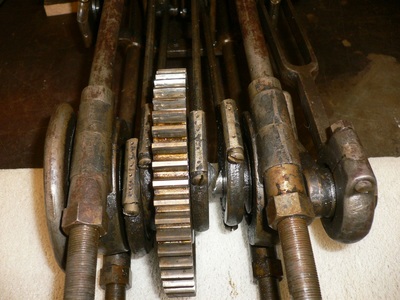
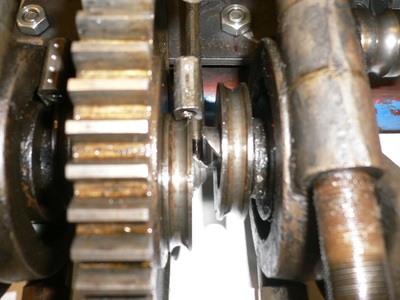
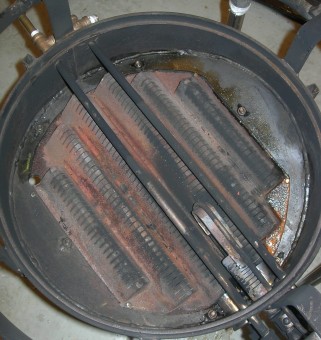
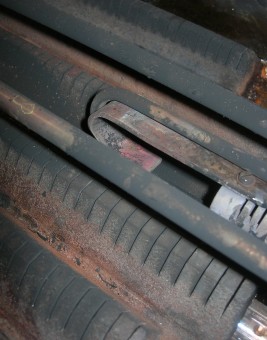
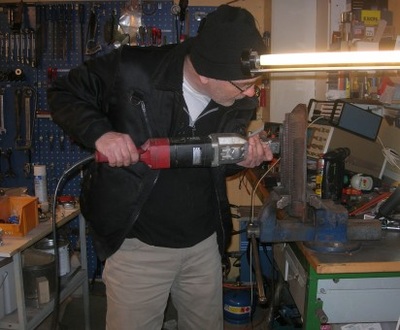
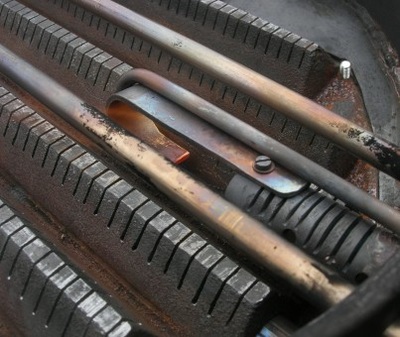
 RSS Feed
RSS Feed
